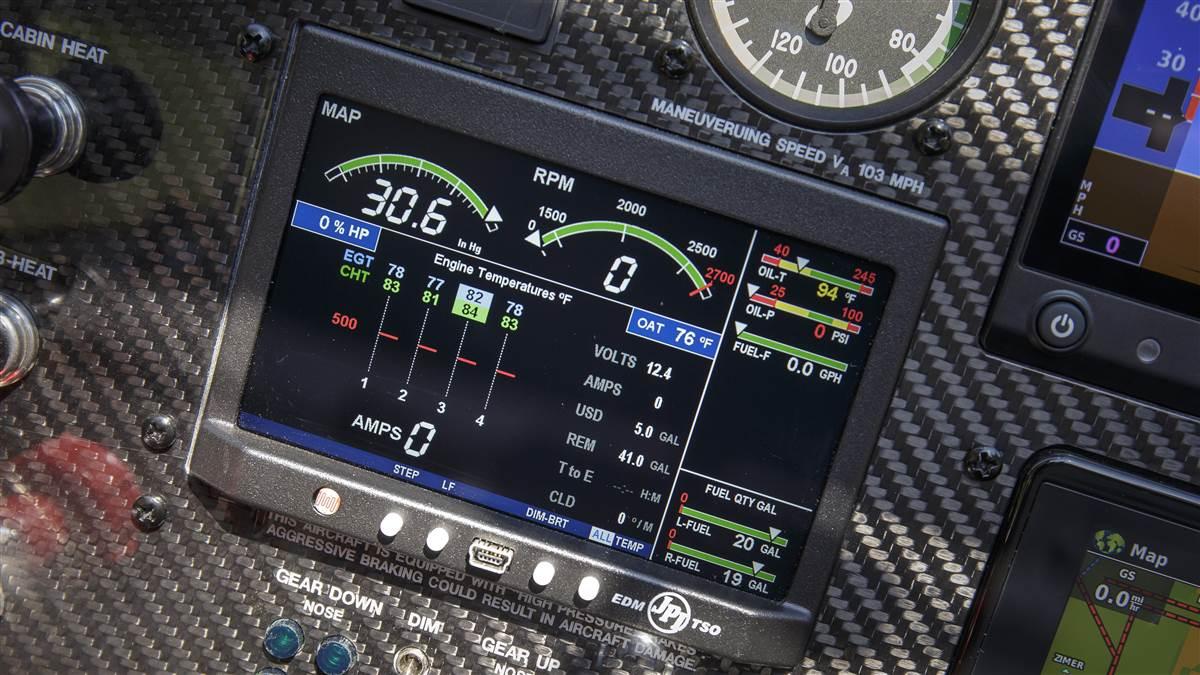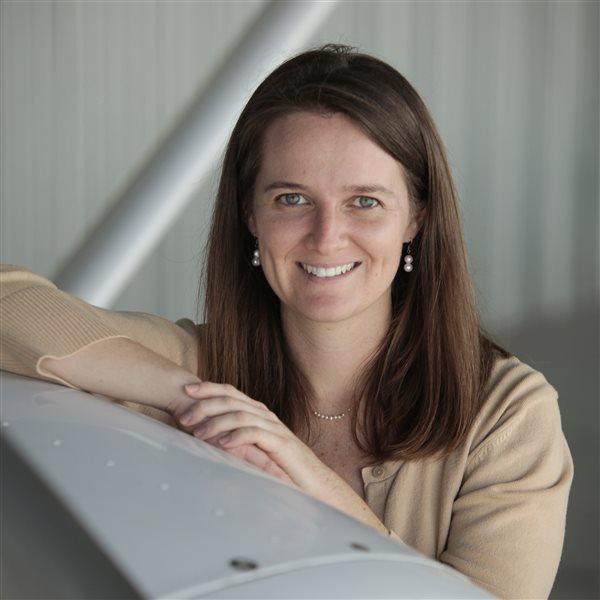AOPA Sweepstakes: Vitals check
Easily analyze Sweepstakes Super Cub’s engine performance

The aircraft’s 160-horsepower Lycoming O-320 engine has performed flawlessly over the past 90-some flight hours, from its first cross-country after its restoration in Montana to Florida to a mountain flying course and numerous events around the United States. Being able to easily see the engine’s health through exhaust gas (EGT) and cylinder head temperatures (CHT), rpm, oil temperature and pressure, fuel flow, endurance, and volts while flying added an extra layer of comfort during engine break-in and flights over the Idaho wilderness.
CiES electronic fuel-sending units provide precise fuel level readings displayed on the EDM-900, so there’s never a question of how much fuel is on board. Long-time Super Cub pilots who are used to checking fuel levels by looking at sight gauges on each wing root will be able to adjust quickly to seeing the level right on the instrument panel.
Having the engine data available during flight is a plus, but J.P. Instruments has made the EDM-900’s data easy to download so you can analyze the data or share the information with your maintenance shop. The EDM-900 comes with a USB flash drive and an adapter that plugs into the face of the instrument so you can transfer the data. From start to finish, it takes two minutes or less to hook up and download the information. JPI provides a free computer download of its EZTrends 2 program that allows you to pull flights in to analyze individually or by group.
Data can be displayed on graphs, an instrument simulator, in table format, or on Google Earth. On a graph, the data for multiple flights resembles that of a heart beat on a monitor, with rises and falls at regular intervals (the takeoffs and landings) and relatively steady periods in between. Check all four CHTs and EGTs, and view the corresponding rpm, manifold pressure, fuel flow, oil temperature, and CHT cooling in degrees per minute.
Super Cubs typically run hot, and cylinder head temperatures are an important parameter to monitor. After the AOPA Sweepstakes Super Cub’s engine break-in, it continued to run hot, with three cylinders typically running a little above 400. Baker Air Service added a baffling modification that has helped bring down the temperatures. During the late summer and warm, early fall flying season, the cylinders ran mostly in the 380- to 390-degree Fahrenheit range (Nos. 3 and 4 are the hottest), and only occasionally topped 400 during a prolonged climb.
Email [email protected]

 Web:
Web: 

